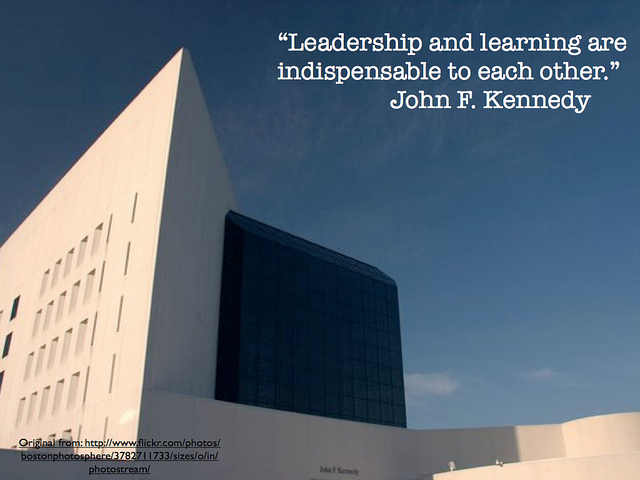As a “seasoned” employee of the Corps of Engineers, I thought I already knew quite a bit about leadership. After almost 25 years, I have been a Project Manager, Program Manager, and had a few stints as a temporary Supervisor, in addition to my usual technical work in environmental compliance. When my mentor suggested I apply for the annual Leadership Development Program (LDP), I was surprised. She indicated that too often, LDP participants do not have sufficient background to leverage the leadership training into action. Also, there’s a history of LDP participants leaving the Corps, thereby wasting the invested money and time spent training them. So in our District, we’re starting to make changes.
What is Leadership Training?
Federal agencies, including the Corps, have a variety of leadership training available. Even within the Corps, there’s a lot of variation in how the LDP program is administrated, from 9-month programs to multi-year programs, and some are linked with Army (our “parent” organization) leadership programs. In Omaha District, we have an annual 12-month program limited to 12 participants each year that meet two days each month, and targets early- to mid-career employees. The program includes university classes, in partnership with University of Nebraska Omaha (UNO), and also integrated classes from the Army’s Command and General Staff College (CGSC) in Fort Leavenworth, Kansas. LDP participants are nominated by their supervisors, and selections are approved by the Colonel (commander of our District). LDP participants are invited to “shadow” the Colonel and Division Chiefs, which may include travel to our Headquarters in Washington D.C.
Beginning with last year’s class (which specifically targeted middle management employees), Omaha District is trending toward inclusion of late-career employees.
The 2015 LDP cohort includes three “late-career” employees (myself included), two non-Corps contracted employees, and seven early- and mid-career employees. The group includes a Supervisor, Administrative Officer, Economist, and several Engineers and Project Managers, as well as staff from Real Estate, Contracting, Protective Design, and Emergency Management. This has proven to be a very interesting mix of background, experience, and perspective.
Teaching an Old Dog New Tricks
One of the early classes we attended at UNO focused on our strengths using the Gallup Strengthsfinder process. This information was paired with other ideas, such as the Four Styles of Leadership, and examples when things went wrong . While some of this information was a review for me, much of the information was either new, or presented in a different manner, and therefore quite helpful. As we discussed team development, dealing with difficult people, negotiation, and other topics, knowing the strengths and styles of others in the group helped with strategy development. Because I’ve been around for a while, I was able to share when there was a District-wide implementation of the Gallup Strengthsfinder program in the 1990s, and then how that interest waned as command styles changed.
Top 3 Insights from Leadership Training
As I write this, I’m only halfway through the program (which ends this December), so I’m sure I will have additional insights to share later in the year:
- Learning makes everything more interesting. Being able to step back and review the day-to-day workload through a new paradigm provides new insights. Too often, we get into a routine; not a bad thing, since routines can improve efficiency, but routines can also stymie new ideas and new ways of doing things.
- Army’s CGSC Instructors rock! I was really impressed with these instructors, most of whom are retired military, but all loved teaching and were quite brilliant. Because of LDP, I may consider other online and/or on-campus instruction from CGSC in the future.
- Insights from our non-Corps participants. We often hear how the government differs from the business community, but having specific examples from trusted members of our LDP class provided us with a glimpse into the “other side,” especially in how we contract work. Granted, the government has many more regulations (in our case, both federal and Army regulations) than the private sector, but since we are so used to them we don’t always remember how those regulations impact those outside of the government.
I’m interested in hearing about your experiences with leadership training within your organization! Share your experiences in the comments below.
Becky Latka is part of the GovLoop Featured Blogger program, where we feature blog posts by government voices from all across the country (and world!). To see more Featured Blogger posts, click here.





Becky, love this post! I’m looking forward to hearing more of your insights from the LDP 🙂
Thanks! Glad you enjoyed it!
Love the post Becky. I really agree that mixing the demographics of the leadership classes to include folks that have been around for a while have a great benefits for both the early career folks and the seasoned employees. People who have been around for a while have great real-world examples of how things look in practice and how to collaboratively problem solve, while the newer folks bring a level of energy and excitement that inspires everybody to stretch. Thanks!
Thanks Brenda! I agree – the newer folks have energy and new perspectives that add to learning.